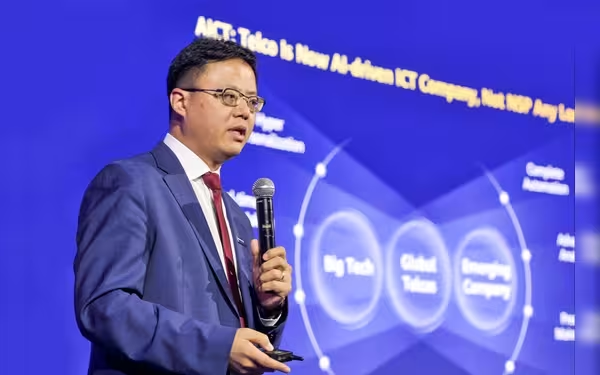Saturday, November 16, 2024 05:54 PM
ACT3 Strategies for LATAM's GIGA and AI Transformation
- All-Optical Transition boosts FTTH adoption in LATAM.
- Gigabit Transition meets demands of digital services.
- Scenario Transition personalizes broadband offerings.
 Image Credits: prnewswire_apac
Image Credits: prnewswire_apacExplore ACT3 strategies transforming LATAM's broadband landscape for GIGA and AI eras.
The world is rapidly evolving, especially in the realms of technology and communication. In Latin America (LATAM), the shift towards optical broadband networks and artificial intelligence (AI) is becoming increasingly significant. This transformation is not just a trend; it represents a fundamental change in how people connect, work, and live. As the demand for faster and more reliable internet grows, companies are looking for ways to adapt and thrive in this new digital landscape.
Gary Lu, a prominent figure in the telecommunications industry, has recently highlighted three key strategies that can help carriers in LATAM embrace this change. These strategies are known as the "ACT" to the power of three: all-optical transition, gigabit transition, and scenario transition. Each of these transitions plays a crucial role in expanding the user base and increasing revenue for broadband services, ultimately enhancing the quality of digital life in the region.
The first strategy, the "All-Optical Transition," focuses on accelerating the shift from traditional cable broadband to fiber-to-the-home (FTTH) services. This transition is already underway, with a significant rise in FTTH users across LATAM. Fiber broadband is now the preferred choice, outpacing traditional cable services. The growth rate for FTTH subscriptions has been impressive, with a compound annual growth rate (CAGR) exceeding 20% since 2021. Local carriers that have invested in FTTH services are reaping the rewards, enjoying improved operational efficiency and substantial business returns. With the cost of FTTH equipment decreasing due to large-scale production, now is an opportune moment for further investment in this area.
The second strategy, the "Gigabit Transition," emphasizes the need for higher network speeds to meet the demands of digital and AI services. As more people engage in activities like 4K/8K live streaming, virtual reality, and remote work, the requirement for sufficient bandwidth becomes critical. Technologies such as Wi-Fi 6, Wi-Fi 7, and Huawei's iFTTR F50 solution are paving the way for carriers to enhance Wi-Fi coverage and tap into new business opportunities in the gigabit smart home sector. Industry experts predict that within the next three years, 30% of broadband users in LATAM will have access to speeds of 500Mbps or more, with 10% utilizing gigabit broadband.
The final strategy, the "Scenario Transition," aims to provide diverse and scenario-specific services that cater to the personalized needs of users. The applications of optical broadband are expanding beyond traditional home entertainment. With the rise of the live streaming economy and the gig economy, new opportunities are emerging for carriers to leverage optical broadband in innovative ways. Huawei is committed to collaborating with carriers to explore new business models and deliver services that align with users' unique requirements. In the AI era, the development of these services relies heavily on vast amounts of data, robust computing power, and high-speed networks—areas where carriers excel.
As we look to the future, it is clear that the telecommunications landscape in LATAM is on the brink of a significant transformation. Carriers have the chance to build smart home hubs that connect various devices, providing enhanced services and support for AI applications. By utilizing technologies like Fiber-to-the-Room (FTTR), they can ensure high-speed and stable network connections for AI-driven services. The potential for personalized offerings powered by cloud-based AI is immense, and carriers that seize this opportunity will undoubtedly thrive in the GIGA and AI era.
The journey towards embracing the GIGA and AI eras is not just about technology; it is about enhancing the lives of individuals and communities in LATAM. As carriers adopt these strategies, they will not only expand their business opportunities but also contribute to a more connected and digitally empowered society. The future is bright for those who are willing to adapt and innovate in this rapidly changing landscape.













